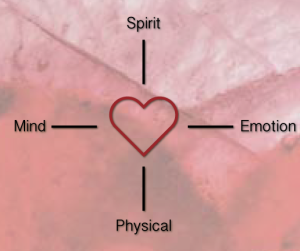“We humans are right in the middle
between two realities. One is
outer and one is inner.”
-Thomas R. Hersh
I am almost certain that most of you have felt a little “out of balance” with all of the accelerated collective changes going on around the world. These changes and powerful energies are continuing strong so far in January 2017. Being aware of your inner balance impacts the way you perceive the outer world. The right brain presents us with a gift of seeing patterns and wholes and is essential for understanding the context and detecting meaning (Ferguson, M., 1980).
When considering trauma-exposure, there are some commonly overlooked causes of emotional and psychological trauma which are explored in narrative therapy, “the telling of the story.” Lived-experiences, such as; falls or sports injuries, surgery, the sudden death of someone close, a car accident, a breakup of a significant relationship, a humiliating or deeply disappointing experience; and, the discovery of a life-threatening illness or a disabling condition are all examples of what might be overlooked.
The overall impact of trauma is “person specific” and can impact all or some of these areas: 1) Body and brain – Neurobiology with the fight/flight/freeze response. The biological response can cause a constant state of hyper-arousal, fear, and anxiety; 2) Memory and Perception are fragmented and may cause the survivor difficulty concentrating; 3) Beliefs, i.e., what it means to feel safe, trust, have self-esteem, feel connected and feel in control of our lives; 4) Frame of Reference, i.e., identity – “Who am I?” and/or spirituality, i.e., “What do I believe?;” and, 5) Feelings and the ability to identify and manage – the ability to connect to others.
The trauma-exposed patient loses the meaning which emerges from content and connectedness. Without context nothing in life makes sense. Context is braided together with an interrelationship of what we know, and this creates a web of relevance and meaning (McFeature, B., Herron-McFeature, C., 2017).
HeartPath utilizes a simple self-assessment tool which can measure balance very quickly that you have in all areas of self; emotional, physical, spiritual, and mental. Below is a diagram of the assessment tool which gives you as an individual or a provider with a patient to measure these areas with scaling questions. For example; “On a scale of one to ten with the number one representing “not feeling well at all” and the number ten “I am feeling wonderful and strong in this area.”

When we take a couple of minutes to assess how we are doing in each of these areas of self, this allows awareness on what we need to work on to improve the low numbers on the assessment. For example, if I have a number “3” for my physical body then I evaluate, diet, exercise, and sleep hygiene. It may be as simple as being disciplined to working on balancing my circadian rhythms.
Through self-assessment and increased intuition, we become conscious of our “whole self,” which is the beginning of healing and integrated health. That is why the line from the movie, “The Wizard of Oz” is so profound, “All you have to do is click your heels three times and repeat, ‘there is no place like home.'” Home is in our hearts, and it is within the inner spiritual heart that we embrace the value of all life challenging experiences. These lived-experiences are transmuted as we connect meaning-making and purpose with context with unconditional love.
—
Ferguson, M. (1980). The Aquarian Conspiracy – Personal and Social Transformation in the 1980’s. New York, NY: Penguin Group.
McFeature, B. & Herron-McFeature, C. (2017). Integrated Health – HeartPath Practitioner Assessment and Intervention for the Trauma-Exposed Patient. Melbourne, Florida, Motivation Press, Inc.


Recent Comments